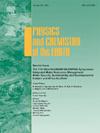在哈萨克斯坦阿克莫拉地区寻找斯特普尼亚克含金类型的小型侵入体:一种多地球物理技术和无人机方法
IF 3
3区 地球科学
Q2 GEOSCIENCES, MULTIDISCIPLINARY
引用次数: 0
摘要
目前的数据显示,在哈萨克斯坦的阿克莫拉地区已经发现了大约100个含金地质体。这类矿体的特点是石英脉形态多样,常呈链状,成因类型新颖。由于已确定了有利的成矿地质构造因素,该地区深部层位含金岩的形成前景看好。这一论断得到了已知金矿和详细勘探工作的历史数据的支持,这些数据证明了确定经济上可行的金矿进行开发的前景。不管有希望的富金地形如何,复杂的地质构造的存在、广泛的崩积层或松散的沉积物覆盖,加上缺乏地质和地球物理信息,都阻碍了勘探的成功。本文认为,考虑到上述挑战,利用无人机(UAV)以诱导极化为标志的航磁电复合地球物理方法对中值梯度进行修正是有效的。研究结果为解决该区地质构造、空间位置、深埋矿体识别等问题提供了可能。采用联合方法对矿区精细的地质构造进行了预测,确定了有潜力的草原型金矿化感兴趣的地质体,并证明了地球物理方法在寻找含金带中的适用性。本文章由计算机程序翻译,如有差异,请以英文原文为准。
The search for small intrusions of the Stepnyak gold-bearing type within the Akmola region of Kazakhstan: A multi-geophysical technique and unmanned aerial vehicle approach
Current data reveals about a hundred gold-bearing geological bodies have been identified in the Akmola region of Kazakhstan. Such ore-bodies are characterized by various quartz veins that occur often as stockworks, and new genetic types. The region looks promising in terms of the formation of gold-bearing rocks in deep horizons, since favorable factors of ore-forming geological structures have been identified. This assertion is supported by the known gold occurrences, and historic data from detailed exploration work, which prove the prospects for identifying economically viable gold deposits for development. Irrespective of the promising gold-rich terrain, the existence of complex geological structures, presence of extensive colluvium or loose sediments cover, coupled with poor geological to geophysical information, impedes exploration successes. This paper shows that considering the aforementioned challenges, a composite geophysical methods of aeromagnetic, and electrical techniques through unmanned aerial vehicle (UAV), marked by induced polarization in the modification of the median gradient can be effective. The results made it possible to solve the problems of detailing the geological and tectonic structure of the area, the spatial positions, and identification of deeply buried ore bodies. The adopted combined-approach projects subtle geological structure of the site, identifies promising geological bodies of interest for steppe-type gold mineralization, and demonstrated the applicability of geophysical methods in the search for gold-bearing zones.
求助全文
通过发布文献求助,成功后即可免费获取论文全文。
去求助
来源期刊

Physics and Chemistry of the Earth
地学-地球科学综合
CiteScore
5.40
自引率
2.70%
发文量
176
审稿时长
31.6 weeks
期刊介绍:
Physics and Chemistry of the Earth is an international interdisciplinary journal for the rapid publication of collections of refereed communications in separate thematic issues, either stemming from scientific meetings, or, especially compiled for the occasion. There is no restriction on the length of articles published in the journal. Physics and Chemistry of the Earth incorporates the separate Parts A, B and C which existed until the end of 2001.
Please note: the Editors are unable to consider submissions that are not invited or linked to a thematic issue. Please do not submit unsolicited papers.
The journal covers the following subject areas:
-Solid Earth and Geodesy:
(geology, geochemistry, tectonophysics, seismology, volcanology, palaeomagnetism and rock magnetism, electromagnetism and potential fields, marine and environmental geosciences as well as geodesy).
-Hydrology, Oceans and Atmosphere:
(hydrology and water resources research, engineering and management, oceanography and oceanic chemistry, shelf, sea, lake and river sciences, meteorology and atmospheric sciences incl. chemistry as well as climatology and glaciology).
-Solar-Terrestrial and Planetary Science:
(solar, heliospheric and solar-planetary sciences, geology, geophysics and atmospheric sciences of planets, satellites and small bodies as well as cosmochemistry and exobiology).
 求助内容:
求助内容: 应助结果提醒方式:
应助结果提醒方式:


